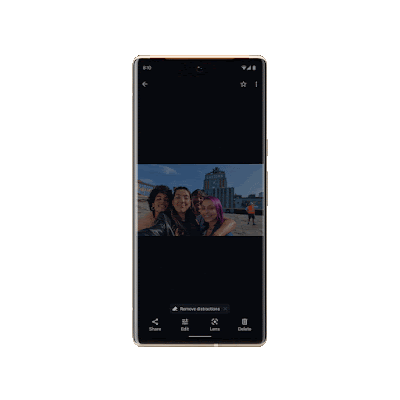When we launched the Google News Initiative in 2018 with a mission of helping to create a sustainable landscape for journalism, the news industry and the world were in very different places. Now, more than three years later, we are reflecting back on what we’ve accomplished together with Canadian news organizations, nonprofits and journalists while at the same time deepening our commitment to helping newsrooms solve challenges.
Reporters and editors around the country told us that using technology to build digital journalism skills to adjust to the digital age and combating misinformation are critical priorities. That’s why we’ve expanded our News Lab trainings in Canada and have committed to training 5,000 journalists over the next three years on digital skills for the newsroom.
The COVID-19 pandemic has placed increasing pressure on the business side of newsrooms, impacting their ability to cover essential stories for their communities. That led us to create the Journalism Emergency Relief Fund, putting much-needed funding of $1.5 million into the hands of over 230 local Canadian newsrooms. The COVID-19 pandemic was also the impetus for the Support Local News campaign in the U.S. and Canada, which encouraged people to support their local paper.
In 2019, we held our first North American Innovation Challenge which supported four Canadian news organizations in understanding their communities and developing new publishing business models. And we’ve just announced the winners from our third North American Innovation Challenge, out of the 25 projects selected, 7 are with Canadian newsrooms. Winners include Energeticcity.ca, a local news organization in Northern BC, which will focus on helping rural media operators connect with their audiences, and Metroland, which will address the deficiency in news coverage of and for Indigenous people in Ontario.
Throughout, we strive to ensure that our work touches a diverse group of publishers and audiences. We have recently announced the Global News Equity Fund, a multi-million dollar commitment to driving transformational change with a focus on diversity and equity. The fund will provide direct financial support to news organizations that are owned by or serve underrepresented communities around the world, and it is our hope that it builds upon our existing work of supporting underrepresented publishers and communities.
We also developed the GNI Ad Transformation Lab, a program to support Canadian and American publishers serving underrepresented communities in their transition to digital. The first round of the Lab helped 28 Black and Latino publishers advance their digital businesses and build digital advertising capabilities required to achieve growth today. The application for the 2022 Ad Transformation Lab is now live. The application window will close on Monday, November 29 at 11:59 p.m. EST. We encourage news organizations and publishers who serve diverse and underrepresented communities in the United States and Canada to apply.
We recently made a conscious effort to broaden our support to focus on local and emerging news organizations. Publishers have shared with us that adapting their business models to digital is immensely difficult. So together with industry associations and thought leaders worldwide we are bringing the Digital Growth Program to Canada to help news organizations accelerate growth in advertising and reader revenue and strengthen their core foundations in audience development, product and data. The feedback we received from partners also encouraged us to grow our investment in our audience insight tools, including our recently launched, News Consumer Insights.
Additionally, we are supporting aspiring news entrepreneurs through efforts like our Startups Boot Camp, an 8 week program in partnership with LION publishing designed to help participants with hands-on coaching and support to launch or develop a news offering. Applications have just closed for this upcoming all-Canadian cohort, and we cannot wait to see the news products that this group brings to market.
We’ve also just announced The Data-Driven Reporting Project, a partnership between the GNI and the Medill School of Journalism, Media, Integrated Marketing Communications at Northwestern University. Medill will run The Data-Driven Reporting Project, which aims to address the inequality of resources for local newsrooms and freelancers when doing essential data-driven, investigative reporting. The project is committed to awarding $2 million to journalists working on document-based investigative projects that serve local and underrepresented communities throughout the United States and Canada. Learn more on how and when you can apply.
This is just a snapshot of our work. Over the last three years we’ve accomplished a lot, but there’s much more to do. Achieving a healthy, sustainable and diverse news industry isn’t something Google or any single entity can or should do alone. This is a shared responsibility across publishers, companies, governments, civic society and more. Today we remain as committed as we’ve always been to playing our role in supporting Canadian newsrooms of all sizes for years to come.



















